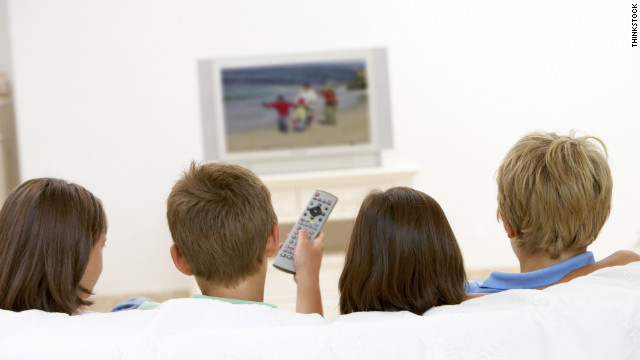Too much TV linked with weaker kids
(Time.com) The more TV kids watch in early life, the thicker they get around the waistline and the weaker their muscle strength, a new study finds.
It's no secret that watching TV
is linked with some unhealthy outcomes in kids — previous studies have found
that children who watch more television are more likely to eat junk food, have trouble sleeping and become obese — but
the new study, published in BioMed Central's open access journal International
Journal of Behavioral Nutrition and Physical Activity, establishes a link
between screen time and specific measures of physical fitness.
"We already knew that there is an
association between preschool television exposure and the body fat of fourth
grade children, but this is the first study to describe more precisely what that
association represents," said senior author Dr. Linda Pagani, a researcher at
the Sainte-Justine University Hospital Research Center, in a statement.
The researchers looked at 1,314
kids who were participating in the Quebec Longitudinal Study of Child
Development. The parents of the kids reported the number of hours they spent
watching TV each week: At the start of the study, when the the kids were 2.5
years old, they were watching about 8.8 hours of TV per week on average.
Over the next two years, TV time
increased by six hours to 14.8 hours weekly on average. By age 4.5, about 15% of
the kids in the study were watching more than 18 hours of television each
week.
The more time kids spent in front
of the TV, the larger their waistlines, the researchers found: Each additional
hour of weekly TV logged between age 2.5 and 4.5 was linked with an increase of
waist size of slightly less than half a millimeter by the time the kids were in
grade school. So, a child who watches 18 hours of television at 4.5 years old
will have gained an extra 7.6 millimeters (0.3 in.) around his middle by age
10.
Fractions of inches may not sound
like much to worry about, but even small increases are significant on child-size
bodies, and over time, these little changes add up. Waist size in particular is
known to be associated with overall obesity and also with measures of visceral
fat, the type of fat that hides around the organs deep in the gut and is
especially risky to health.
"Our study is the first to look
specifically at waist measurements," says lead author Dr. Caroline Fitzpatrick.
"The weight around the waist is particularly dangerous in terms of
cardiovascular and metabolic health."
The researchers measured both
waist size and another indicator of physical fitness: explosive leg strength.
When the kids were 8.5 years old, the researched gauged their performance on the
standing long jump in order to measure their leg-muscle power, a key contributor
to sports ability. Kids who watched more TV as preschoolers were more likely to
end up in the bottom 5% of long-jump performance: Each hour spent watching TV
per week at age 2.5 corresponded to about a third of a centimeter loss in
jumping distance.
That's important for all kids,
not just those who want to play soccer or basketball. Muscle power is associated
with other markers of health and fitness: According to Fitzpatrick, if you have
good muscle fitness, you'll also have better cardiovascular fitness and be less
susceptible to injuries.
The authors write: "This
suggests that for some children, excessive television exposure was associated
with the experience of a substantial level of impairment. This finding is of
concern given that explosive leg strength is a robust indicator of individual
general muscular strength. Eventually, reduced muscular strength that persists
into adulthood can predict a number of negative health outcomes."
"Kids who watch more TV are
known to be less involved in physical activity and less inclined to play sports,
but we found there is actually a potential risk in decreasing their athletic
performance with too much television," says Fitzpatrick. "This can influence
their health as adolescents and adults."
Fitzpatrick says the findings
are concerning since young kids are still undergoing muscular and skeletal
development.
"It's a move it or lose it
problem," she says.
The American Academy of
Pediatrics recommends that children over age 2 watch no more than two
hours of television per day; younger kids should watch no TV at all. Each hour a
kid spends planted in front of the tube is an hour he or she isn't exercising,
playing or doing any other constructive activity like reading.
"When it's cold outside, you
want a kid to throw on their snow gear and go play instead of preferring to stay
inside to watch hockey on TV," says Fitzpatrick.
Source : http://edition.cnn.com/2012/07/16/health/tv-overuse-weaker-kids/index.html?hpt=he_c2




Comments
Post a Comment